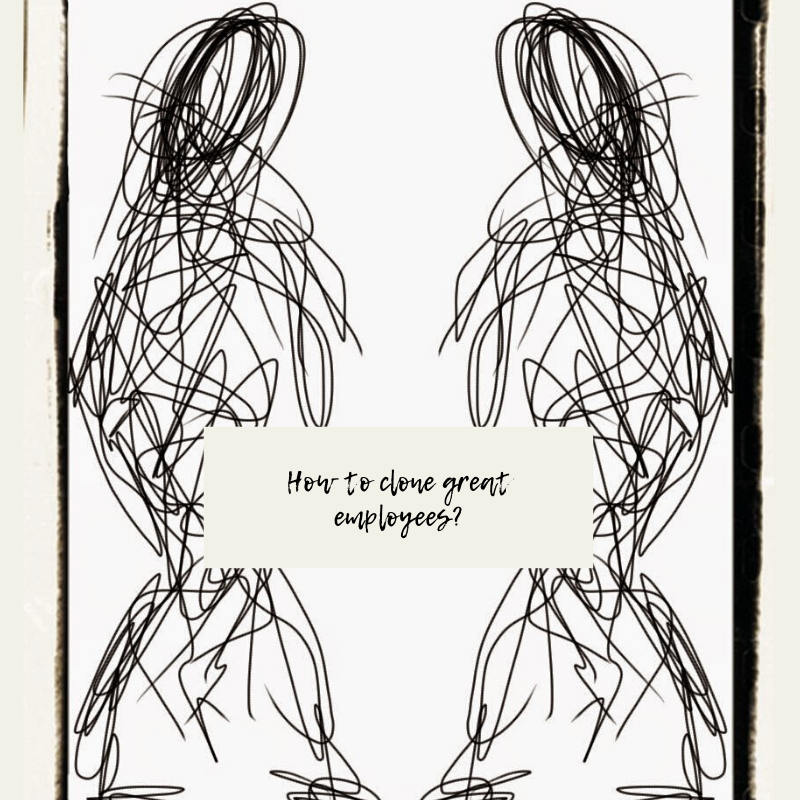How to clone great employees?
Did you ever observed one of your great employees and though “If only I could clone such people?†Interestingly enough I have an approach that I used successfully to do exactly that. It goes like this:
Step 1. Group all employees of the same profession/role into 3 groups: low effectiveness, average and high effectiveness.Easier to do with salesmen rather then artists but I leave you to solve this challenge on your own (hint: look for expert evaluations, multi factor models and sociometrics).
Step 2. Make an assessment of average and highly effective groups. Carry out behavioural interviews, quantitative and qualitative 360 reviews and look for distinctions. What makes the difference between a great one and average type?
Step 3. Extract archetypes – sustainable behaviour sets that separate the great from the average.
Step 4. Assess all employees in this profession/role now looking what of those archetypes are they closest to
Step 5. Create a personalised development program for every employee how to bring him/her closer to the archetype. Use mentors extensively, every employee of a certain archetype should get a mentor from great employees of the same archetype.
Adjust your hiring procedures accordingly, so that you can start looking for those archetypes while hiring.
Important observations:
1. Accept the fact that you could have multiple successful archetypes within same profession. One guy sells great because he has lots of empathy and asks great open questions. Lets call this archetype “Great listenerâ€. Another one sells great because he is deep into technology and explain to the potential client all the nitty gritty details of the solution. Lets call him “Engineerâ€. All those people are different and they sell differently using their special skills.
2. We drop the idea of the universal worker, and will not try to teach everyone everything.
3. We look for strong sides of every archetype and try to improve them even more instead of working on removing the limitations of those archetypes.
